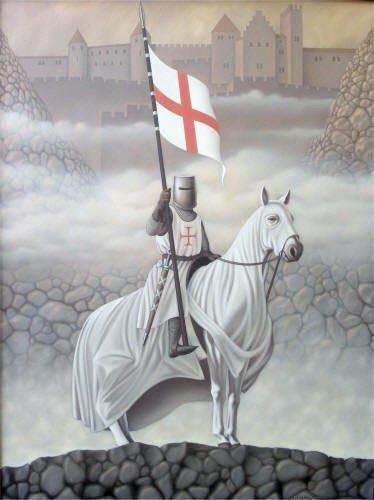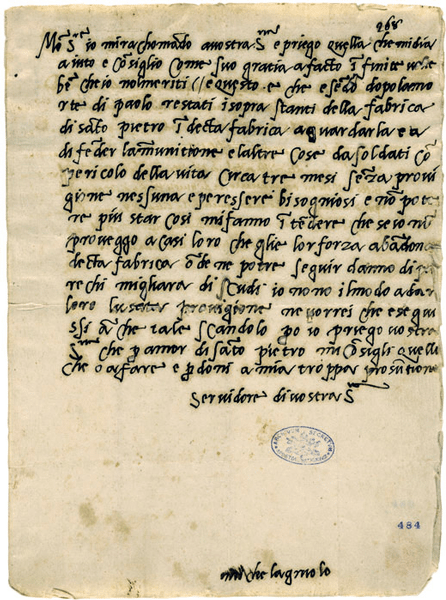
Sometimes, especially in the summer, it gives a time for reflection and surprise.
Today's surprise is the story of how the Knights Templar invented modern banking and made the Swiss the best bankers in the world.

This is prompted by the Knights Templar being back in the news again, due to the fascination of Anders Behring Breivik, the Norwegian mass-murderer who hit the headlines after massacring 77 victims last month.
Breivik posted a video on YouTube about the Knights Templar 2083, claiming that he had co-founded the “Knghts Templar Europe” with eight others.
The Knights Templar fascinate many people.
For example, I was fascinated by them thanks to Monty Python and the Holy Grail …
… no wonder we get on so well with our French friends.
Amazingly, when you look into their history, you find that the Knights Templar or, to be more exact, the Poor Knights of Christ and the Temple of Solomon, were created and destroyed by the French.
The Knights were established in Jerusalem in 1118 by nine French Knights, with the mission to protect pilgrims to the Holy Land.
They may have been known for protecting pilgrims and launching Crusades, but their other real skill was banking.
In fact, many say they created the modern version of banking.
What?
Yep, they sure did.
This is because most of the Knights were the sons of nobility and, as they joined the Knights Templar, they had to take a vow of poverty. The result was that they Order accumulated large amounts of cash and property, donated to the Order by family and relations of these young bucks.
In other instances, the nobles themselves would join the Knights, to take part in a Crusade, and would put their estate in the hands of the Order during their absence.
Overall, the Knights Order was trusted by most nobility to look after their goods and chattels, as the Order had an international infrastructure behind them, namely the Church and the Pope.
For all of these reasons, the Knights Templars' financial power was significant, with much of the Order's infrastructure devoted to economic rather than religious pursuits.
This meant that, by 1150, the Order's original mission – a freelance security service for pilgrims travelling to the Holy Land – had changed to one of guarding valuables.
For example, the Order would guard and escort people to the Holy Land and, during the pilgrimage, the pilgrims would leave their valuables with the Order in exchange for a letter of credit, an early form of traveller’s cheque that is still used today in commerce.

This worked by having the pilgrim visit a Templar house in their home country where they would deposit their deeds and valuables. In exchange, the Templars would give them a letter describing their holdings, which would form a trusted proof of being good for the money.
The letters had codes of proof that all the Order could recognise as being a real letter of credit. There’s some disagreement as to how the codes were used, but generally it was thought that the letters were encrypted with a cipher alphabet based upon a Maltese Cross.
As a result, whilst traveling, the pilgrims could present these letters to other Templars along the way to withdraw funds from their account.
It was a real innovation as it meant that the pilgrims were safe from robbery during their journey as they weren’t carrying valuables. It also increased the power of the Templars.
The Knights' involvement in banking grew over time into a new basis for money, as Templars became increasingly involved in banking activities.
One of the biggest sticking points being how to make money on their deposits, as usury was a core principle that the Church would not support.
Usury – the use of interest – is not allowed in most religions, and has split Islam and Christianity ever since.
This shows the power of the Knights Templar, as the face that they did lend money in return for interest didn’t have them excommunicated or distanced from the Church.
In some ways, you can see the modern version of Islamic Finance in the ways in which the Knights Templar achieved this, as they used loopholes in the religious strictures to create profit from loans.
This was by ensuring that the Order retained the rights to property, so they didn’t make money from interest but from renting.
In other words, they soon moved from being “the Poor Knights of Christ” to being incredibly wealthy and powerful, with hundreds of ships, banks and castles at their disposal and 9,000 estates from Scotland to Syria.
However, with wealth and power came envy and hostility, with the Order eventually disbanded when King Philip IV of France put thousands of them to death in the 14th century in order to plunder their wealth for his war against England.
Those bloody French again!
This led to another little known fact, but one that explains many things in today’s modern world.
The Knights, fearing their lives and wealth, fled and unified in the founding of Switzerland.
Just check out their flags …

The flag on the left is Knights Templar and on the right is the Swiss flag.
And we all know that the Swiss are both neutral and bankers – where did that come from?
Well it goes back to the ending of the Order and the founding of Switzerland.
When the first Swiss cantons rebelled against the Holy Roman Empire, the Knights Templar solders were sent to overthrown them.
Instead, when the Knights got there, they were amazed to find the farmers and merchants of the Swiss cantons were fighting as a first-class opponent, rather than some unstructured rabble.
As a result, when the Knights were on the run from the French King, they fled to the cantons of Switzerland and asked for help.
This is why, when Switzerland was founded as a confederacy of the cantons in 1291, it rapidly rose to prominence as both a financial centre and temperate community that could tolerate religious divides and opposing views, and still does today.
All fascinating stuff.
Oh, and if you want one more piece of fascination, guess why we’re all afraid of Friday 13th?
Thanks to the Knights Templar.
Back in 1307, when King Philip IV decided to wipe out the Knights and take their wealth, he sent his army out to disband the Order on , yes you guessed it, Friday 13th October 1307.
Thanks again to the Week for reminding me of this, and Wikipedia for adding depth.
This is the first in a five-part series on Swiss Banking:
- The Knights Templar (1300s - 1400s)
- The Protestant Reformation (1400s - 1600s)
- Medieval Independence (1600s - 1800s)
- Industrialisation (1800s - 1900s)
- The Modern World (1900s - 2010s)
Chris M Skinner
Chris Skinner is best known as an independent commentator on the financial markets through his blog, TheFinanser.com, as author of the bestselling book Digital Bank, and Chair of the European networking forum the Financial Services Club. He has been voted one of the most influential people in banking by The Financial Brand (as well as one of the best blogs), a FinTech Titan (Next Bank), one of the Fintech Leaders you need to follow (City AM, Deluxe and Jax Finance), as well as one of the Top 40 most influential people in financial technology by the Wall Street Journal's Financial News. To learn more click here...

